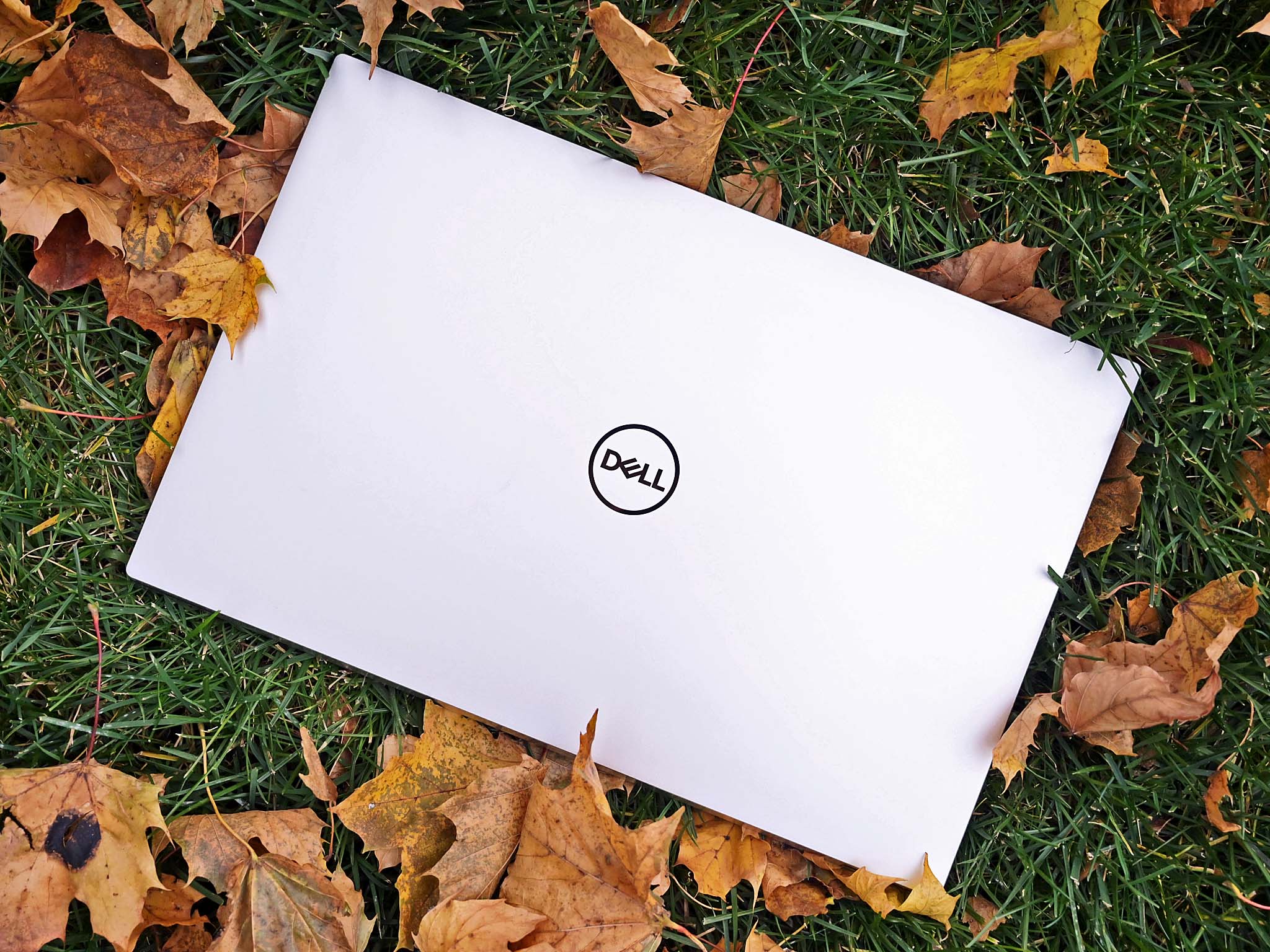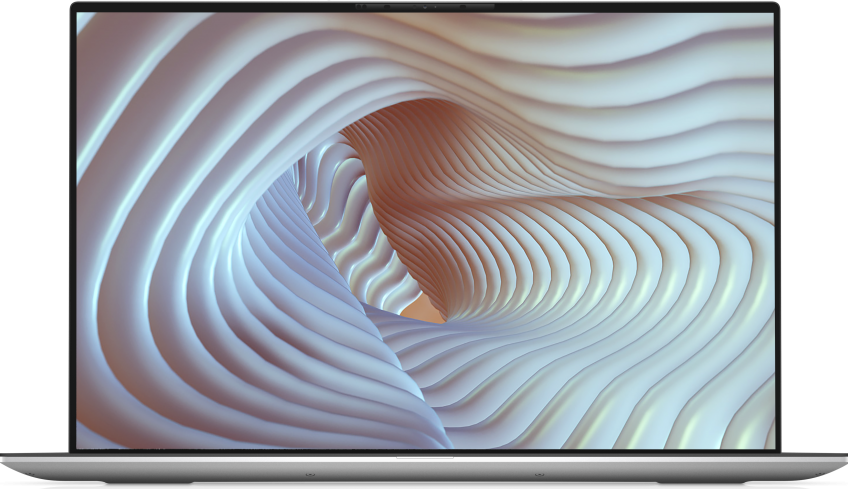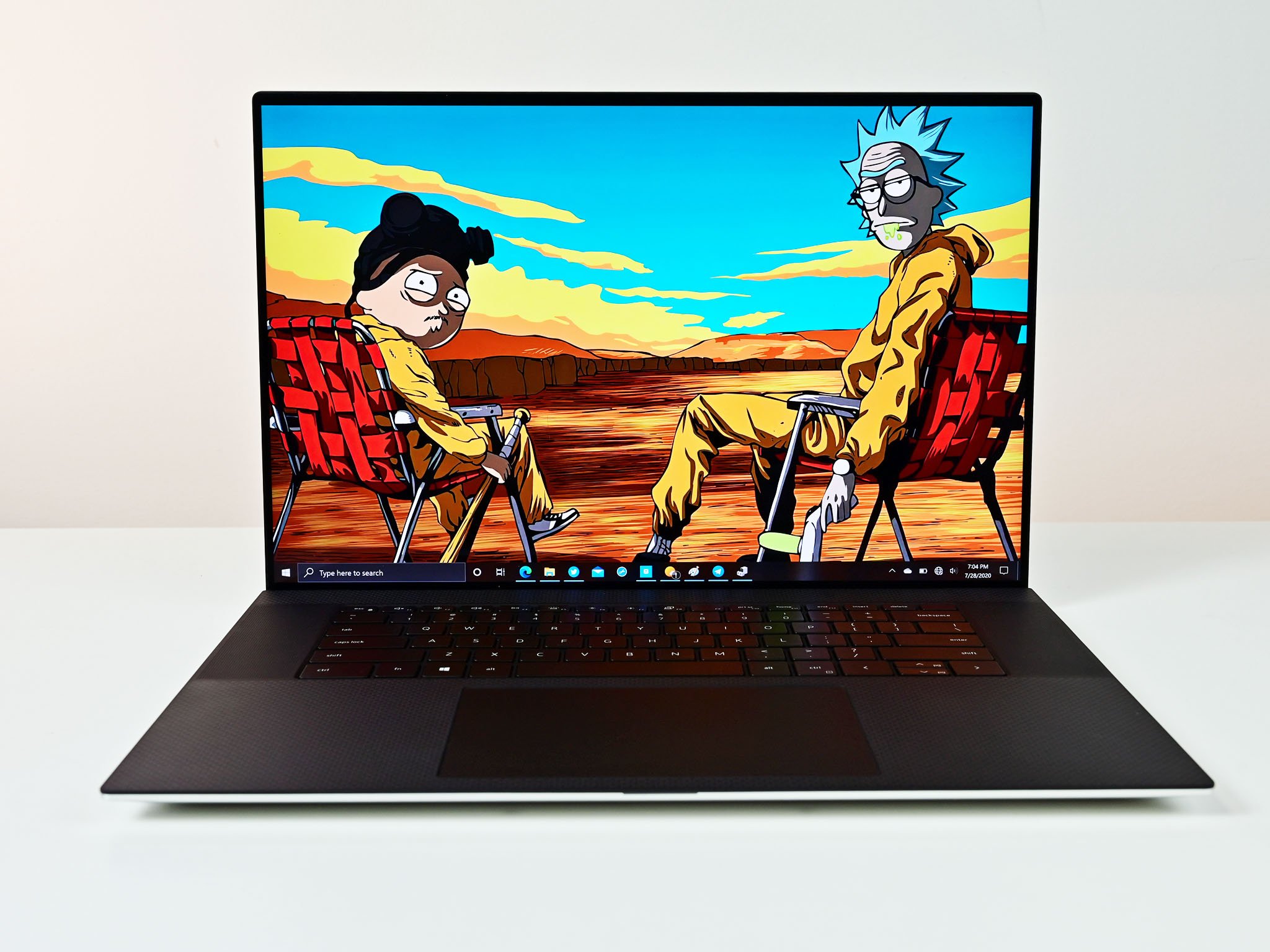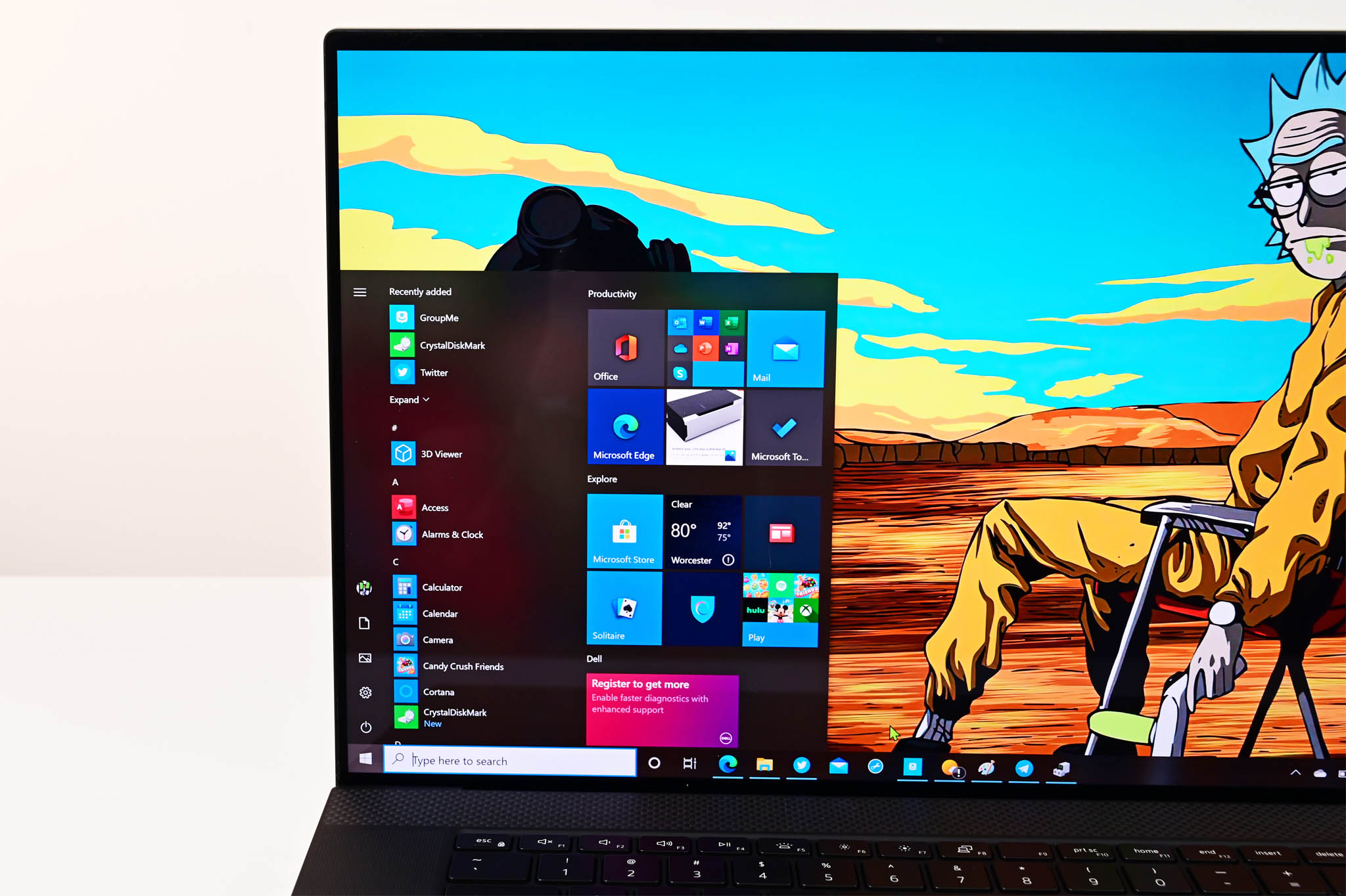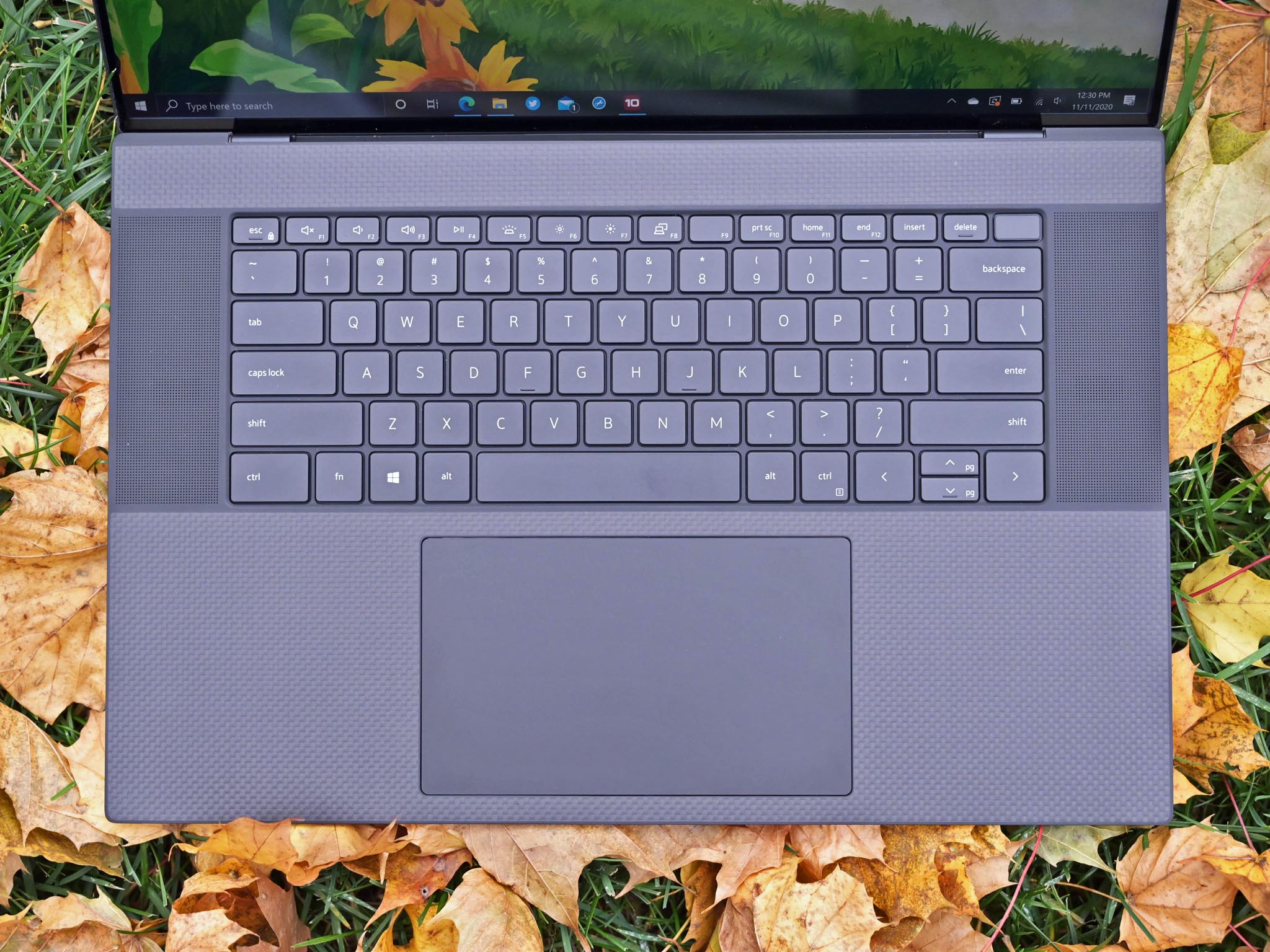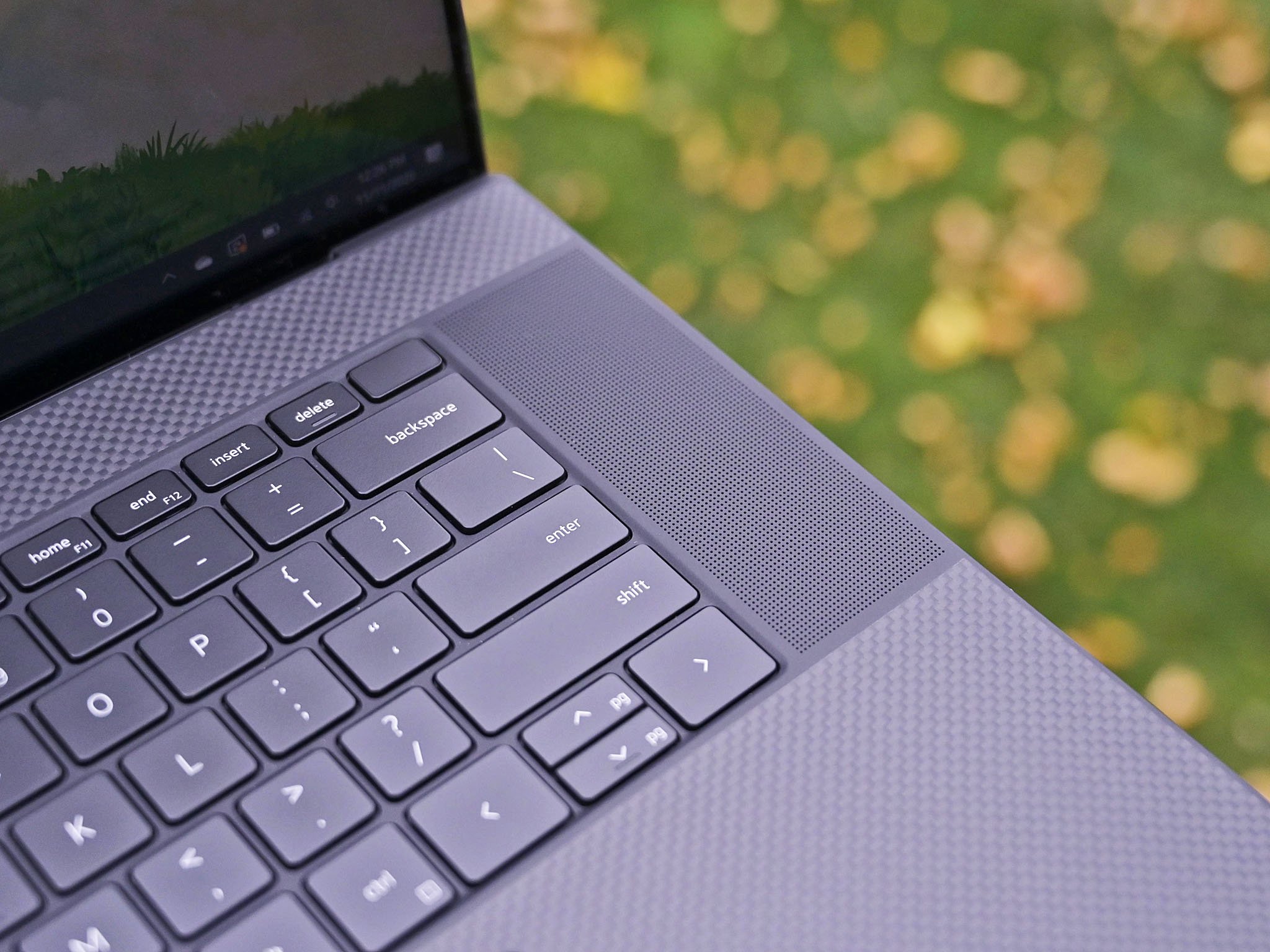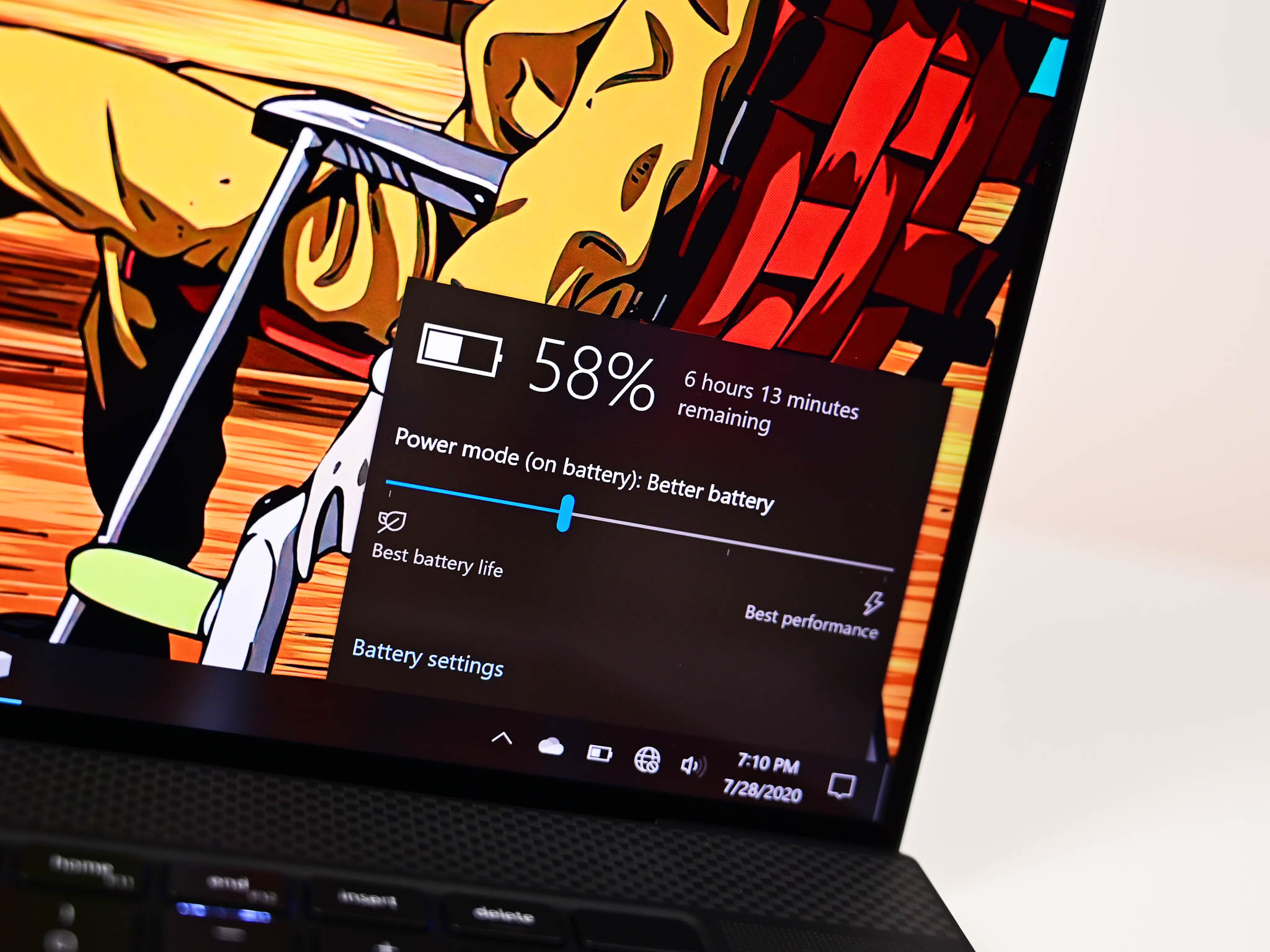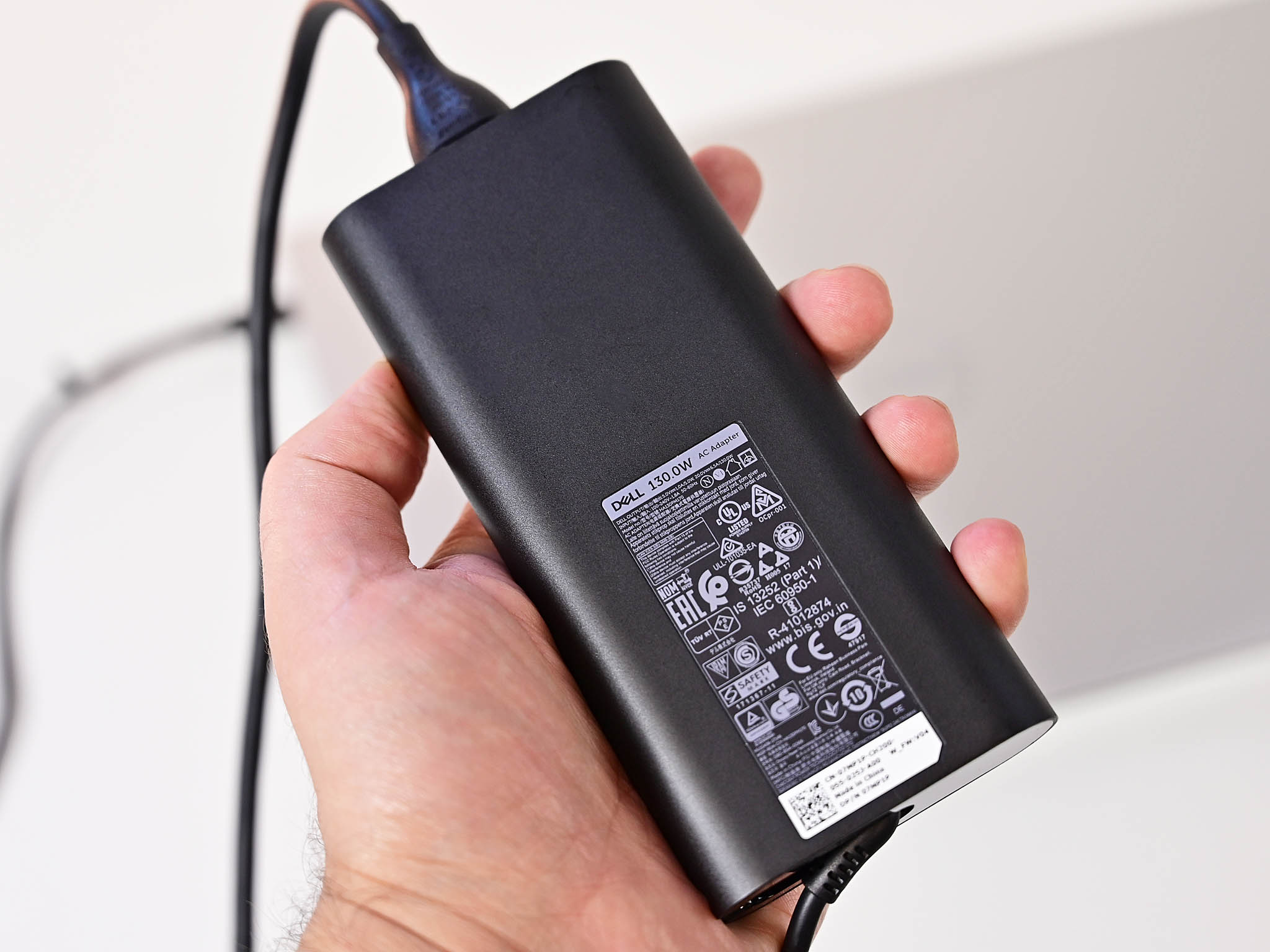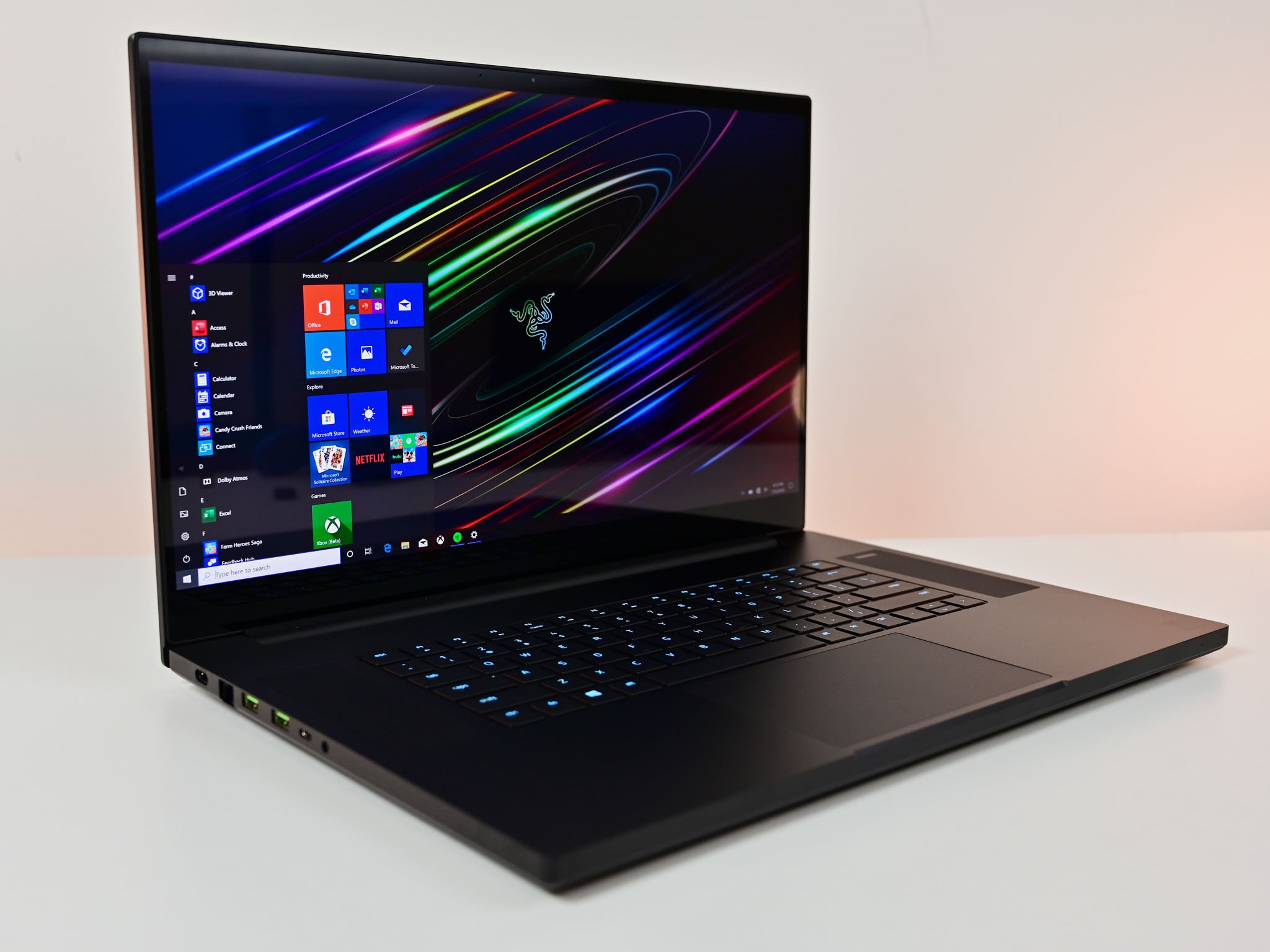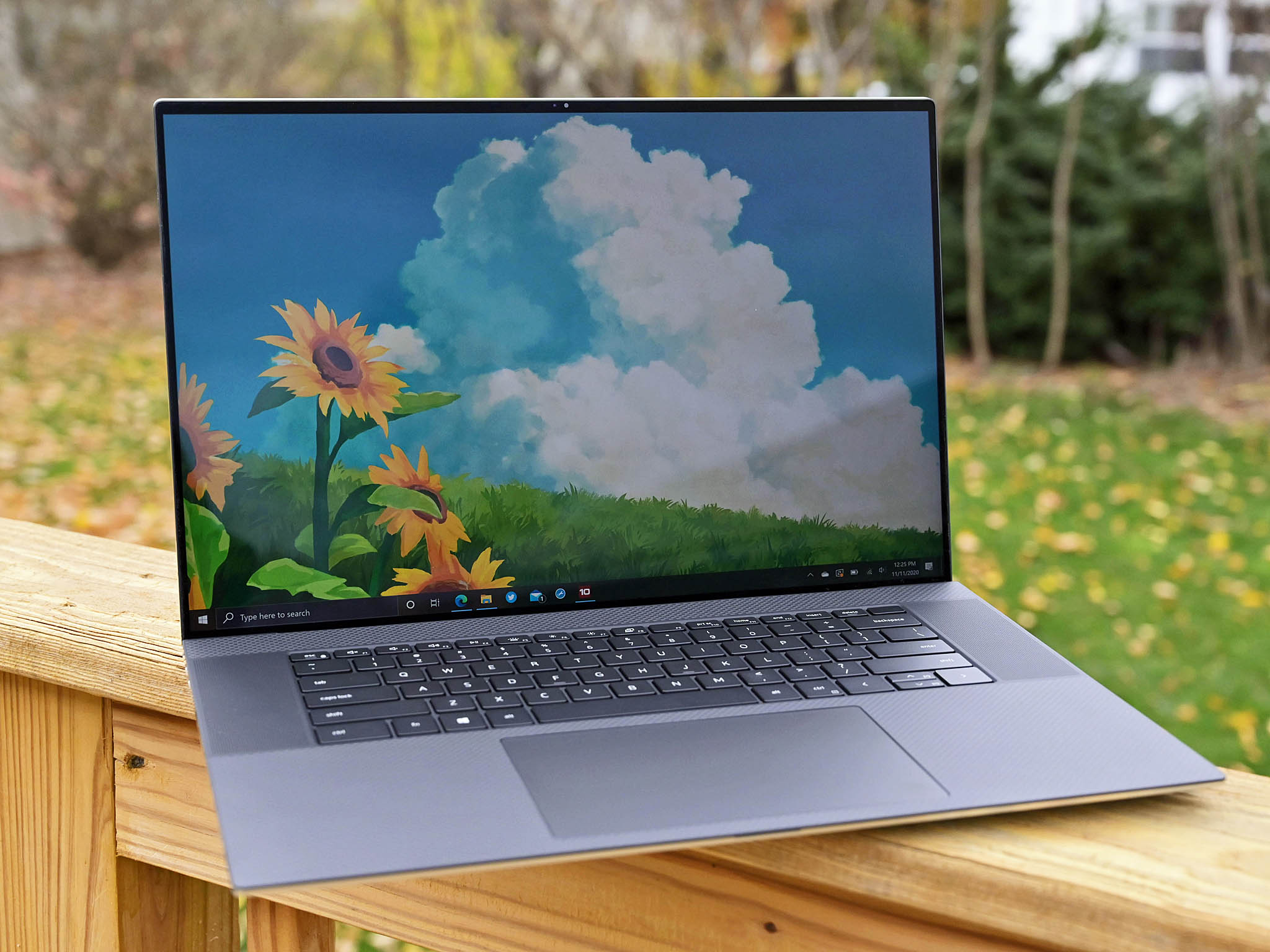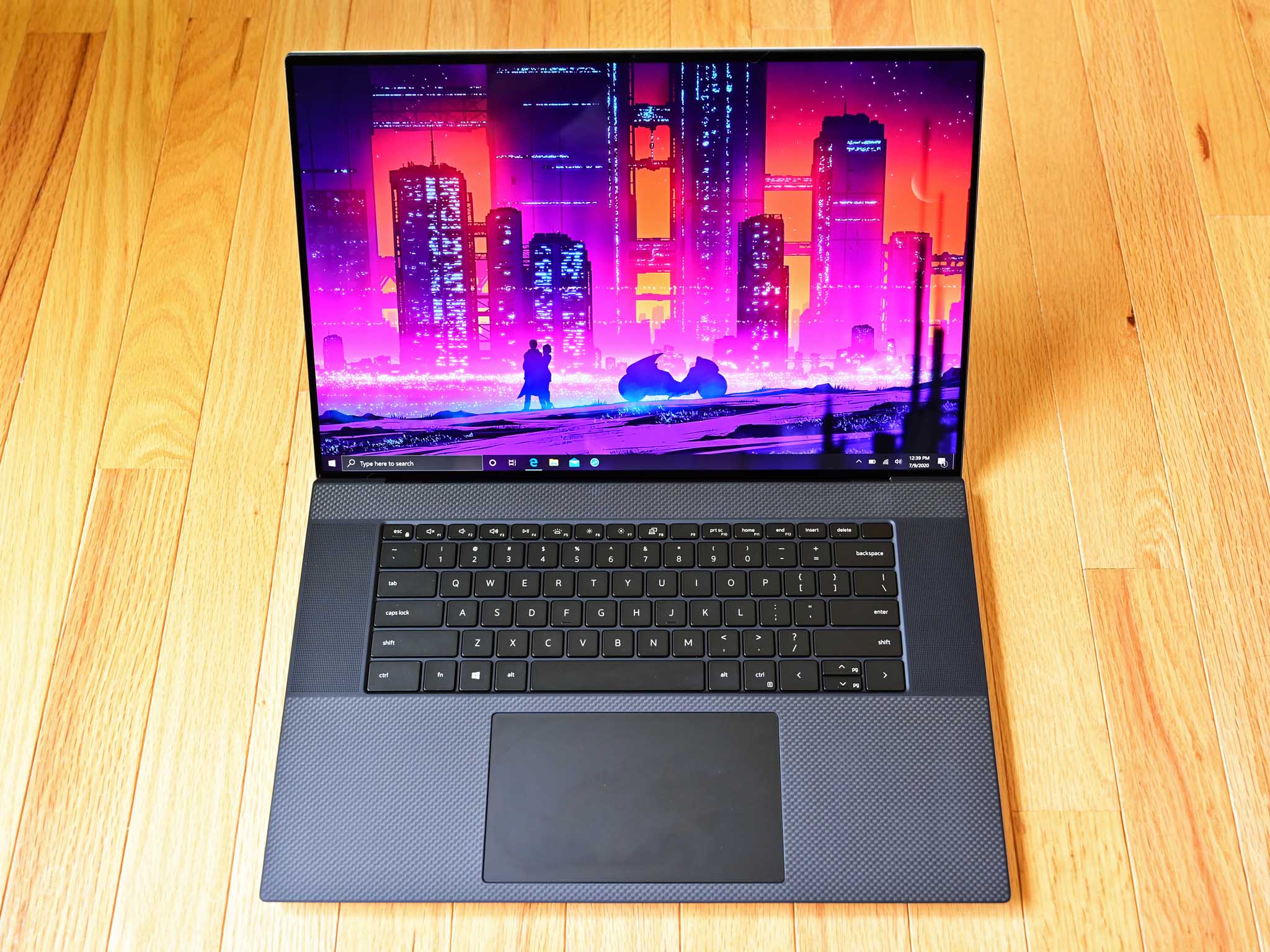When a 17-inch laptop feels like a 15-inch one but handles like a professional workstation, you get the outstanding XPS 17.
One of the best side effects of laptops shrinking bezels and switching to taller 16:10 displays is seeing the return of 17-inch laptops. In the past, only the most hardcore would carry around a six-pound behemoth that aggressively challenged the laptop naming convention. But now, there have seen attempts by LG (who make the ridiculously light, albeit underpowered, Gram 17), Razer (their super-powerful gaming Blade Pro 17), and now Dell with the XPS 17, which sits nicely in between.
The XPS 17 is arguably one of the best and most exciting laptops in what is already one of the most exciting years for PCs to date. But, while you gain power, size, and one of the best portable displays, the tradeoff is increased weight and size. That means it is not for everyone, but for those who yearn for a mobile desktop PC, the XPS 17 is an attractive option.
I've been using the XPS 17 since late summer, and here is what you need to know about it and how it compares to the highly-touted XPS 15.
Multimedia powerhouse
Dell XPS 17 (9700)
Bottom line: The XPS 17 is a monster of a laptop with parts that outshine every other mobile PC on the market. The biggest (and best) display, superb audio, excellent typing, and enough graphics power to keep anyone happy. It may be heavy, but it's no wimp.
Pros
- 17-inch 16:10 HDR400 display is gobsmacking delightful
- Excellent keyboard, trackpad
- Powerful quad audio
- Octa-core CPU and RTX-level graphics
- Looks fantastic, feels great
Cons
- Heavy and dense
- Below average web camera; IR is finicky
- No inking
Jump to:
- Specs and Features
- Display
- Keyboard, trackpad, camera
- Audio
- Performance and battery
- Competition
- Should you buy?
Dell XPS 17 specs and features
Classifying the XPS 17 is a bit difficult since, between its size and power, it can do a bit of everything, including video editing, some decent gaming, productivity, engineering, music creation, and anything that requires both a lot of processing oomph and a massive 17-inch screen. It is a workstation, but one that leans into the prosumer and premium angle instead of pure business.
The 17-inch display is the centerpiece of the XPS 17. It's why you buy them.
For this review, I am using a model configured with a Core i7-10875H (eight-cores), NVIDIA GeForce GTX 2060 (Max-Q Design), 32GB of DDR4 RAM, and 1TB of storage, and the 17-inch UHD+ (3840 x 2400) touch display, which is $2,940. That is certainly not cheap, but any self-respecting PC user should be drooling at that spec list. If that's still not enough power, you could upgrade to a Core i9-10885H, 64GB of RAM, and a 2TB SSD for $3,724 total.
It's not all crazy expensive, however. If you are OK with a full HD display, Core i5-10300H, 8GB of RAM, 256GB of storage, and basic Intel UHD graphics, you could pick up this 17-inch Ultrabook for $1,350. And, of course, Dell lets you configure everything in between to hit the price point and performance level you are looking to get.
Although not announced yet, I suspect Dell will put the XPS 17 on sale for Holiday 2020 and Black Friday sales.
| Category | Dell XPS 17 (9700) |
|---|---|
| Operating System | Windows 10 Home Windows 10 Pro |
| Display | 17-inch 4K UHD+; InfinityEdge touch; HDR400 + Dolby Vision, 500 nits; 94% DCI-P3; anti-reflective 17-inch FHD+; InfinityEdge; Dolby Vision, 500 nits; 100% sRGB minimum; anti-glare |
| Processor | Up to 10th Gen Intel Core i9-10885H |
| Graphics | Up to NVIDIA GeForce RTX 2060 (Max-Q Design), 6GB, GDDR6 |
| Memory | Up to 64GB DDR4 2933MHz |
| Storage | 256GB PCIe 3 x4 SSD 512GB PCIe 3 x4 SSD 1TB PCIe 3 x4 SSD 2TB PCIe 3 x4 SSD |
| Webcam | HD (720p) |
| Security | Windows Hello camera Windows Hello fingerprint reader |
| Connectivity | Killer Wi-Fi 6 AX1650 (802.11AX) built on Intel chipset Bluetooth 5 |
| Ports | 4x Thunderbolt 3 (power delivery + DisplayPort) 1x Full size SD card reader 1x 3.5mm headphone/microphone jack 1x USB-C to USB-A 3.0 & HDMI 2.0 adapter included |
| Audio | Studio quality tuning w/ Waves MaxxAudio Pro & Waves Nx 3D audio 1.5W x2 tweeters 2.5W x2 woofers |
| Battery | 56WHr or 97WHr |
| Dimensions | Height: 19.5mm (0.77") x Width: 374.45mm (14.74") x Depth: 248.05mm (9.76") |
| Weight | 2.11 kg (4.65 lbs) to 2.51 kg (5.53 lbs) |
| Availability | Now |
| Price | Starting at $1,349 |
Regarding design, if you are having a tough time discerning the XPS 17 from the XPS 15, you're not alone. The two laptops are nearly indistinguishable for the overall design, but the XPS 17 is notably more massive (and heavier). Considering how well refined the XPS line is, this is an excellent decision by Dell. You are getting a premium all-metal exterior, soft-touch interior with carbon fiber, and four USB Type-C ports, all of which support Thunderbolt 3. There is also a handy SD carder reader, which makes sense for creative professionals.
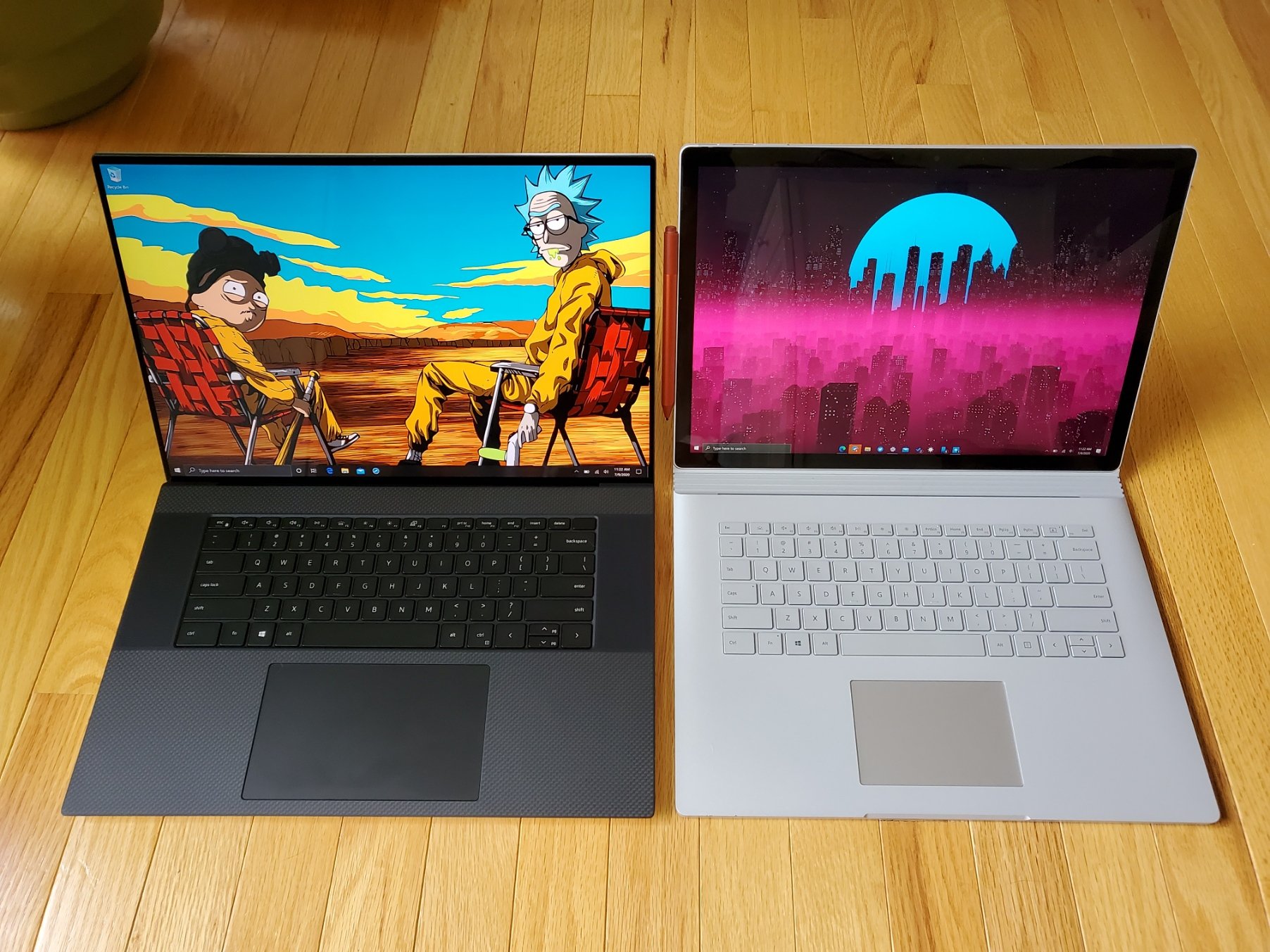 Dell XPS 17 (left) and Surface Book 3 15 (right).
Dell XPS 17 (left) and Surface Book 3 15 (right).
The size is deceptive, however. While it is big and bulky, it's not that much larger than a Surface Book 3 15-inch.
Dell lets you open the display with one hand, and while carrying around a 5.5 pound (2.51kg) laptop is not light, it feels astonishingly dense thanks to it being packed to the gills with a giant 97 WHr battery.
There's not a whole else to say here. Dell's XPS design is exceptional on the XPS 13 and XPS 15, and that carries over to XPS 17 with much success.
A wall of pixels
Dell XPS 17 display
The 17-inch Sharp IGZO display is the centerpiece of the XPS 17. It is the reason you should want to buy this laptop. This screen is simply the best-looking laptop display of any PC on the market right now, period. Here's why.
Dell gets a commendation for being the first to re-embrace 16:10 aspect ratios, which is found here too (most laptops still use 16:9). When opened, the XPS 17 is a wall of pixels with razor-thin bezels on all four sides. There is more to see with this screen aspect, especially at 17-inches and a spectacular 3840 x 2400 resolution. When using the XPS 17 on your laptop (yes, it does fit), the screen creates a very immersive experience.
This screen is simply the best-looking laptop display on the market right now, period.
This screen also has the color accuracy chops to back up its size with 100 percent sRGB, 100 percent AdobeRGB, and 97 percent DCI-P3. Those numbers are some of the highest I have seen in a laptop, and it is significantly better than the XPS 15 (80 percent Adobe RGB and 76 percent DCI-P3).
Brightness is rated for 500 nits, and my measurements come in just shy of that at 495 nits. The XPS 17 also supports streaming HDR video, HDR, and wide color gamut (WCG) apps. There is also built-in Dolby Vision support, which can be combined with Dell PremierColor (professional color profile settings) and Dell CinemaColor (presets for various video playback scenarios).
Other bells and whistles include supporting touch and an anti-reflective coating to reduce glare, crucial for when doing sensitive photo work or even typing a paper.
Typing is satisfying, the camera, not
Dell XPS 17 keyboard, trackpad, camera
Looking down at the XPS 17's massive deck and the keyboard is sized perfectly with decent-to-shallow travel for the keys. Again, Dell is not doing anything radically different from the XPS 15, matching a recent (and welcomed) redesign for 2020 with slightly larger keycaps making them easy targets for your fingers. It's not only a good feeling keyboard but also is fast too.
There is a little flex with the keyboard deck and ample two-stage backlighting, which provides superb contrast against the dark keys.
Fans of number pads are going to lose their minds looking at the XPS 17. In some ways, it is a fair point as laptops this huge almost always include that feature. I do not miss it one bit. I never use number pads, and the near-perfect symmetry of the keyboard, massive flanking speakers, and trackpad are a much better tradeoff for creative professionals. If you need a number pad, you can buy one as an accessory.
The trackpad is huge going wider than the spacebar by three more keys. It is exceptionally smooth and powered by Microsoft Precision drivers. I had no issue with palm rejection, although I could see where it may be a concern depending on how you type. Clicking is consistent with no dead zones (save for the upper corners), and it is thankfully not very loud. Unlike the early builds of the XPS 15, I had no loose or rattle issues with the XPS 17's trackpad.
The weak webcam is the only thing holding back the XPS 17.
The camera is where things get a bit dicey. Dell uses a micro cam to fit in the ultra-thin bezel. It is just 720P and not of good quality. It gets the job done, but since web cameras are significantly more critical in 2020, it would be nice to see Dell try a bit harder on the next version for quality. There is no privacy shutter – physical or digital – to disable the camera, though there is a white LED to let you know it is in use.
For Windows Hello and password-less logins, Dell does provide an infrared (IR) sensor for facial recognition and a fingerprint reader built into the power button (which is on the keyboard deck). Users can use both, either, or none. Due to the low quality of the web camera, the XPS 17 sometimes struggled in low light conditions or distance. The fingerprint reader is "always-on," meaning if your laptop is open, the reader is active. Still, if the computer is on standby, you can lightly press the power button/reader to wake and log into Windows automatically.
Huge speakers for a big laptop
Dell XPS 17 audio
It is hard to miss the ideally placed massive speaker grills on the XPS 17's top keyboard deck. Behind those laser-drilled grills lie two 1.5-watt tweeters and two 2.5-watt woofers making fair use of this laptop's size. While web camera quality has not been a priority for Dell, sound quality has seen enthusiastic development. The XPS 17 features "studio-quality tuning" with Waves MaxxAudio Pro and Waves Nx 3D audio.
Waves had this "3D" audio feature on older laptops, but it was limited to just headphone usage. That now changes with the XPS 15 and XPS 17 as the laptop's speakers can now better simulate 3D surround sound. The technology can optionally use your web camera to see and track your head to position the audio in a customized sound stage correctly. However, it does not work with UWP apps (including the Movies & TV app) for some reason.
The various audio profiles are tuned by a multi-Grammy Award-winning producer, Jack Joseph Puig, and you can hear the difference for movies, music, or even gaming.
When volume is set to 70 percent, the XPS 17 outputs around 75 dba, which is loud, there was no distortion either. I found the tweeters a bit too dominant for my tastes during movies (although it helps a lot with voice). Luckily, the MaxxAudioPro software had a configurable ten-band equalizer, which allowed me to bring down some of the highs.
Raw power
Dell XPS 17 performance and battery
Due to the larger size and additional thermal breathing room, the XPS 17 ships with an NVIDIA RTX 2060 (Max-Q Design) with 6GB GDDR6 memory compared to the GTX 1650 Ti in the XPS 15. When combined with the powerful Core i7-10875H and 32GB of RAM, there is not much the XPS 17 cannot handle.
The i7-10875H performs better than the smaller XPS 15 thanks to improved heat-pipes and increased thermal space. On a PCMark Stress Test, which loops through the Time Spy benchmark 20 times in a row, the XPS 17 passed with a 98.5 percent score, implying that thermal management is adequate to prevent severe performance drop-offs prolonged CPU-intensive tasks.
CPU
Geekbench 5.0 Benchmarks (Higher is better)
| Device | CPU | Single core | Multi core |
|---|---|---|---|
| Dell XPS 17 9700 | i7-10875H | 1,282 | 8,119 |
| Dell XPS 15 9500 | i7-10875H | 1,318 | 7,621 |
| Dell XPS 15 7590 | i9-9980HK | 1,176 | 7,624 |
| Razer Blade Pro 17 | i7-10750H | 1,314 | 6,164 |
| Lenovo IdeaPad Gaming 3i 15 | i7-10750H | 1,271 | 5,172 |
| Lenovo Legion 5i 15 | i7-10750H | 1,226 | 5,993 |
| Lenovo ThinkPad X1 Extreme (Gen 2) | i7-9850H | 1,160 | 4,168 |
| ASUS ROG ZEPHYRUS G14 | Ryzen 4900HS | 1,221 | 7,982 |
| Surface Book 3 15 | i7-1065G7 | 1,298 | 4,511 |
| Surface Book 2 15 | i7-8650U | 1,130 | 3,602 |
| Dell XPS 13 9300 | i7-1065G7 | 1,284 | 4,848 |
| Dell XPS 13 2-in-1 7390 | i7-1065G7 | 1,209 | 3,571 |
| Dell Inspiron 13 7390 2-in-1 | i7-8565U | 1,111 | 2,965 |
| Dell Precision 3541 | i7-9750H | 1,117 | 4,720 |
| Lenovo IdeaPad Flex 5 14 | Ryzen 5 4500U | 1,087 | 4,570 |
| Surface Laptop 3 15 | Ryzen 5 3580U | 769 | 2,720 |
Cinebench
Cinebench (R20) (Higher is better)
| Device | CPU | Range |
|---|---|---|
| Dell XPS 17 9700 | i7-10875H | 3,118 to 3,240 |
| Razer Blade Pro 17 | Core i7-10750H | 2,623 to 2,681 |
| Lenovo IdeaPad Gaming 3i 15 | Core i7-10750H | 2,771 to 2,818 |
| Lenovo Legion 5i 15 | Core i7-10750H | 2,736 to 2,826 |
| ASUS ROG ZEPHYRUS G14 | Ryzen 4900HS | 4,197 to 4,390 |
| Dell XPS 15 (7590) | Core i9-9980HK | 3,174 to 3,283 |
| HP ENVY 32 AIO | Core i7-9700 | 2,906 to 3,073 |
| Lenovo ThinkPad X1 Extreme (Gen 2) | Core i7-9850H | 1,730 to 2,495 |
| Dynabook Portégé X30-F | Core i7-8665U | 1,242 to 1,313 |
| Lenovo ThinkPad P53 | Xeon E-2276M | 2,686 to 2,701 |
| Surface Laptop 3 13.5 | Core i5-1035G4 | 1,584 to 1,606 |
| Surface Laptop 3 15 | Core i7-1065G7 | 1,703 to 1,745 |
PCMark
PCMark 10
| Device | Score |
|---|---|
| Dell XPS 17 9700 | 5,217 |
| Dell XPS 15 9500 | 5,160 |
| Dell XPS 15 7590 | 5,521 |
| Razer Blade Pro 17 i7 | 6,587 |
| LG gram 17 | 4,157 |
| Lenovo IdeaPad Gaming 3i 15 | 4,757 |
| Lenovo Legion 5i 15 | 5,118 |
| ASUS ROG ZEPHYRUS G14 | 5,707 |
| Surface Book 3 15 | 4,393 |
| Surface Book 2 15 | 4,228 |
| Surface Laptop 3 15 (AMD) | 4,006 |
| Surface Laptop 3 15 (Intel) | 4,604 |
| Dell XPS 13 2-in-1 7390 | 4,427 |
| Dell Inspiron 13 7390 2-in-1 | 3,764 |
| Dell Precision 3541 | 3,906 |
| HP Pavilion x360 14 | 3,558 |
| Lenovo ThinkBook 13s | 3,468 |
3DMark
Time Spy
| Device | GPU | Score |
|---|---|---|
| Dell XPS 17 9700 | RTX 2060 Max-Q | 5,510 |
| Dell XPS 15 9500 | GTX 1650 Ti | 3,936 |
| Lenovo ThinkPad X1 Extreme (Gen 2) | GTX 1650 Max-Q | 3,190 |
| ASUS ROG ZEPHYRUS G14 | RTX 2060 Max-Q | 6,224 |
| Surface Book 3 15 | GTX 1660 Ti | 1,712 |
| HP ENVY 32 AIO | RTX 2060 Max-Q | 5,664 |
| Lenovo ThinkPad X1 Extreme (Gen 2) | GTX 1650 Max-Q | 3,190 |
| Lenovo ThinkPad P53 | Quadro RTX 5000 | 6,760 |
| Lenovo Legion Y740 15 | RTX 2070 Max-Q | 6,406 |
| Lenovo Legion Y740 17 | RTX 2080 Max-Q | 7,128 |
3DMark
Fire Strike
| Device | GPU | Score |
|---|---|---|
| Dell XPS 17 9700 | RTX 2060 Max-Q | 11,648 |
| Dell XPS 15 9500 | GTX 1650 Ti | 7,444 |
| Razer Blade Pro 17 | RTX 2080 SUPER Max-Q | 18,070 |
| MSI GS66 Stealth | RTX 2080 SUPER Max-Q | 17,260 |
| Maingear Vector | GTX 1660 Ti | 14,052 |
| Lenovo Legion Y740 15 | RTX 2070 Max-Q | 14,669 |
| Lenovo Legion Y740 17 | RTX 2080 Max-Q | 16,303 |
| Lenovo ThinkPad X1 Extreme (Gen 2) | GTX 1650 Max-Q | 7,198 |
| ASUS ROG ZEPHYRUS G14 | RTX 2060 Max-Q | 14,709 |
| Surface Book 3 15 | GTX 1660 Ti | 3,406 |
| HP ENVY 32 AIO | RTX 2060 Max-Q | 13,163 |
| Lenovo ThinkPad X1 Extreme (Gen 2) | GTX 1650 Max-Q | 7,198 |
| Dell XPS 15 (7590) | GTX 1650 Max-Q | 7,763 |
| Lenovo ThinkPad P53 | Quadro RTX 5000 | 16,367 |
| Lenovo Legion Y740 15 | RTX 2070 Max-Q | 14,669 |
| Lenovo Legion Y740 17 | RTX 2080 Max-Q | 16,303 |
| Razer Blade 15 | GTX 1070 | 13,560 |
SSD
CrystalDiskMark (Higher is better)
| Device | Read | Write |
|---|---|---|
| Dell XPS 17 9700 | 2,639 MB/s | 1,554 MB/s |
| Dell XPS 15 9500 | 3,420 MB/s | 2,856 MB/s |
| Dell XPS 15 7590 | 3,000 MB/s | 2,796 MB/s |
| Razer Blade Pro 17 | 3,023 MB/s | 2,375 MB/s |
| MSI GS66 Stealth | 3,247 MB/s | 2,711 MB/s |
| Lenovo IdeaPad Gaming 3i 15 | 2,170.35 MB/s | 1,082.21 MB/s |
| Lenovo Legion 5i 15 | 3,308 MB/s | 2,960 MB/s |
| Lenovo ThinkPad X1 Extreme (Gen 2) | 3,416 MB/s | 3,016 MB/s |
| Dell XPS 13 2-in-1 7390 | 2,400 MB/s | 1,228 MB/s |
| Dell Inspiron 13 7390 2-in-1 | 1,440.3 MB/s | 359.2 MB/s |
| Dell Precision 3541 | 3,468.8 MB/s | 2,220.4 MB/s |
| Huawei MateBook 14 | 3,470 MB/s | 1,920 MB/s |
| Huawei MateBook X Pro (new) | 3,416 MB/s | 2,779 MB/s |
| Huawei MateBook 13 | 3,436 MB/s | 2,553 MB/s |
| HP Spectre x360 13t | 3,085 MB/s | 1,182 MB/s |
| LG gram 14 2-in-1 | 558.1 MB/s | 523.1 MB/s |
| Dell Latitude 7400 2-in-1 | 3,110 MB/s | 2,825 MB/s |
.
The RTX 2060 Max-Q handily beats the XPS 15's GTX 1650 Ti by a wide margin making it ideal for video editing, music production, rendering, and engineering tasks.
While you can game on the XPS 17, the refresh rate and response time of the display (which are not high), combined with the CPU and GPU, do not classify this as a gaming rig. The XPS 17 is a work laptop that can game on the side (and be quite enjoyable) but do not look for it to be a full-time FPS gaming machine.
Running Cinebench five times in a row yielded an excellent peak of 3,240. That matches the XPS 15 but with a Core i9-9980HK instead of a Core i7 in the XPS 17. The XPS 17 only lost (by a hair) to the powerful ASUS ROG ZEPHYRUS G14, which is impressive.
The XPS 17 is a beast of a laptop with excellent performance and power.
For the 1TB drive, Dell uses a passable Micron 220S PCI-e NVMe SSD. The sequential read and write speeds are below that of the XPS 15. However, like many companies, Dell source different SSDs from different suppliers, implying you could end up with a higher performant Samsung drive by chance. If such discrepancy bothers you, your best bet is to order the least amount of storage you can and upgrade the SSD to your choice.
It is also noteworthy that the XPS 17 has a secondary empty NVME Slot letting you quickly expand storage with your high-performance SSD of choice.
Battery life is a mixed bag, as it depends on how much of that GPU and CPU you are using. For web browsing and productivity, you could get six to eight hours. If you start gaming, rendering, or crunching data with that CPU, you will go down to five hours or less depending on the display brightness. That's not excellent battery life, but the battery here can't get much larger to Dell's credit. However, the 130W Type-C charger is one of the smallest I have seen, making it easy to pack in a bag.
Looking at synthetic battery tests, the XPS 17 does quite well on PCMark 10's Modern Office, which loops through Microsoft Office apps, the web, and video conferencing with occasional breaks in between. On that test, the XPS 17 garnered a respectable 8 hours and 58 minutes at 180 nits of brightness. But if you go to straight-up gaming, pushing the CPU and GPU simultaneously, battery life drops to 2 hours and 11 minutes. That is not at all surprising considering how much power an eight-core CPU and RTX 2060 can gulp when required.
The bottom line is the XPS 17 does what it sets out to do: it is an enormously powerful, 17-inch workstation that never gets obnoxiously loud or hot when in use. My only complaint is a minor one, but essential to some folks: coil whine. While not severe, I have noticed it when the XPS 17 is plugged in and on max power – the usual culprits. It is only occasional (not persistent), but worthy of mention.
Other options
Dell XPS 17 and the competition
If you are strictly looking at 17-inch workstations, there are not many alternatives to the XPS 17.
The LG Gram 17 is an excellent laptop that weighs just 2.98lbs (1.35 kg). It has a "2K" display, but due to its 15-watt quad-core processor and no discrete graphics, it is a 13-inch Ultrabook made enormous (and light). The Gram 17 is an excellent option for photo editing and productivity, but not for video editing, engineering, or rendering.
XPS 17 is basically the size of an older 15-inch laptop. That's just awesome.
The Razer Blade Pro 17 is a massive gaming rig that can outperform the XPS 17. It features a more traditional 16:9 display, but it can be configured with up to an RTX 2080 Super Max-Q and a 120Hz 4K display. It also has a higher starting price of $2,600. While technically portable, the Blade Pro 17 is a much larger laptop than the XPS 17.
Perhaps the most interesting one I have not yet reviewed is the HP ENVY 17. It has a full number pad, which is missing on the XPS 17. It is significantly less powerful with only a quad-core processor (versus eight-core), and its GPU is limited to the modest NVIDIA GeForce MX330. Users can configure with up to a 4K display, 1TB SSD, and 32GB of RAM. The ENVY 17 starts at a more palpable $949, but for $1,500, you can spec it with a Core i7, 16GB, 512GB storage, and a 4K display.
The Dell XPS 15 (9500) can't be dismissed either. It is essentially the same laptop as the XPS 17, just smaller and less powerful GPU. Still, if you like the look and feature set of the XPS 17 but not the size, the XPS 15 is the logical go-to choice.
You can get more suggestions in our Best 17-inch Laptop 2020 guide.
It's just awesome
So should you buy a Dell XPS 17?
Who it's for
- If you are a music, video, or photo professional
- If you need a top-tier desktop-class display wherever you go
- If you are an engineer, scientist, or developer working with large data sets
- If you need a premium, powerful, but portable 17-inch workstation
Who it isn't for
- If you only want to game
- If you need inking
- If you want a convertible PC
- If you want a thin and light PC
The Dell XPS 17 is, in many ways, the laptop I've wanted Dell to make. It takes its screen technology to the max, letting you sit behind a wall of pixels in your lap, delivering an experience no other laptop can match. It's simply stunning, and if you do photo or video editing or any task where accurate color detail is required, you're going to love it. It's the main reason to buy the XPS 17.
Performance is also exceptional. While I love the LG Gram 17, it's just a quad-core basic laptop at its heart. That's a cool (and unique) offering, but Dell gives you that size plus an RTX 2060 (Max-Q design), which delivers some serious processing power.
Typing, using the giant trackpad, and powerful audio performance are also superb. I enjoyed using this to type, browse, and mouse around. Watching a movie with those speakers and display is a super immersive experience unmatched by any other laptop (Razer Blade Pro 17 comes close).
The Dell XPS 17 is the laptop I've wanted Dell to make.
Some weaker areas are battery life – but I am not sure what else you can expect from a giant 4K display, octa-core processor, and gaming-level GPU. I did find it good enough to do productivity work lasting my working hours. And to be clear, you are unlikely to be using the XPS 17 for eight hours a day in your lap versus occasionally at a desk with an outlet, maybe even with a hub (see our Best Laptop Docking Stations 2020 for some ideas).
Another downside? Well, the size. The XPS 17 with a touch 4K display runs 5.5 pounds (2.5kg), making it a tad heavy if you add other gear or books to your bag. There is also no way you can use this while on an airplane, at least not looking like a loon. The only reason to go for the XPS 15 is to prefer something more compact (even an XPS 15 is large for an airplane if not in first-class).
Those points aside, Dell did the right thing of putting as much battery into this laptop as possible, which explains the weight. And I think people who truly need a 17-inch laptop are willing to put up with the bigger size. Let's not forget the XPS 17 is a 17-inch laptop that is now effectively the size of a 15-inch laptop. That is awesome.
My only real gripe with the XPS 17 is the camera and Windows Hello IR system. The camera is just not good, which I think is a bigger deal now, and the IR system was hit and miss, sometimes requiring me to move back or not working in low light.
Overall, Dell is continuing to nail its XPS line. The dedication to 16:10 anti-reflective screens, its improved typing experience, and a design language that is minimalist and functional is welcomed. The sheer range of configuration options is also a blessing, letting you match your needs with your budget. If you need a desktop-class display wherever you go, the XPS 17 should be at the top of your list. It's one of a kind.
Large and in charge
Dell XPS 17 (9700)
A big entry to the XPS lineup
The XPS 17 (9700) features a massive 17-inch display, but thanks to its thin bezels, its body is the size of many 15-inch laptops. It pairs that large display with powerful internal options for creators.
via https://AiUpNow.com November 13, 2020 at 09:02AM by Daniel Rubino, Khareem Sudlow,
